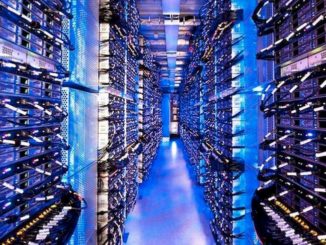
Nvidia may have cornered the market for the compute engines and networks that link them to train GenAI models, and the company has a very large share of the platforms that do inference, too. But if Nvidia wants to get machinery into the neoclouds, the AI model builders, and large enterprises, it has to rely on the OEMs and ODMs to manufacture, test, install, and support the machinery – and do it fast and flawlessly, too.
For the first two years of the GenAI boom, the hyperscalers and major cloud builders soaked up nearly all of the datacenter GPUs that Nvidia could build, and even if Nvidia wanted large enterprises to adopt its technology, there was not enough HBM memory in the world for them to do so. HBM memory supplies are still smaller than demand, but have expanded significantly enough that, after many years of waiting for their turn, the OEMs are finally getting their turn at making some of the most complex and expensive machinery that the world has ever seen and not really profiting as much as they might hope given their efforts. Dell is doing better than all of its OEM peers in this regard, and is adding incremental margin dollars to the business even as its operating profit margin as a share of revenue is dropping.
Hence one of my favorite titles of 2025: The Only Thing Worse Than Selling AI Servers Is Not Selling Them, which covered Dell’s financials for its Q4 of fiscal 2025. We can’t keep using the same title again and again, which is a shame, because after three more quarters of business the situation is much the same for Dell. This was a great quarter for cash flow, of course, because the GenAI market is booming, but it has been far better for Nvidia than it has been for any of its OEM or ODM partners. Someone has to build the servers, and so companies like Dell, Hewlett Packard Enterprise, Cisco Systems, and Lenovo keep chasing deals in the hopes that they will eventually take their expertise and sell GPU accelerated systems to large enterprises at a higher profit margin.
It remains to be seen if this will actually happen, with so many GPUs being snapped up by the hyperscalers, cloud builders (including the neoclouds), and model builders.
In the third quarter of fiscal 2026, which ended in October, Dell sold $21.56 billion in client and datacenter products, up 16.2 percent year on year but down 11.2 percent sequentially. Services revenues were off 5.4 percent to $5.75 billion, which was a 1.6 percent decline from the second quarter of the fiscal year.
Add it all up and Dell posted a tad over $27 billion in overall sales, up 10.8 percent, with an operating income of $2.12 billion, up a very healthy 27 percent. Net income rose by an even better 37.4 percent to $1.55 billion, which represented 5.7 percent of total revenues. That is quite a bit better than the 4.1 percent average for operating income as a share of revenues that Dell has done since the GenAI boom began at the end of 2022. In that sense, this quarter is a big improvement, and datacenter gear is far more profitable for Dell, even with the AI system dilution of operating income, than its consumer and commercial PC businesses.
Dell ended the quarter with $11.33 billion in cash, but it does have $31.24 billion in short term and long term debt, a legacy of its acquisition of VMware and EMC so many years ago that the company has paid off in part but is now having a hard time doing in recent quarters since its debt load is growing.
Here at The Next Platform, what we care about is the Infrastructure Solutions Group, which sells datacenter servers, switches, and storage.
In the third quarter, Dell sold $10.13 billion in servers and switches, up 37.5 percent year on year but down 21.8 percent sequentially from what was a record-breaking quarter for sales of this iron. Dell’s datacenter storage sales hum along more or less steadily with occasional peaks, and hit an average just shy of $4 billion in Q3 F2026, down a half point from the year ago quarter.
Add it up and Dell had $14.11 billion in ISG sales, up 24.1 percent, and operating income was $1.74 billion, up 15.6 percent and representing 12.4 percent of revenues.
Sales of AI systems – meaning those crammed with GPUs – was just a tad over $5.6 billion, nearly double from a year ago but down 31.6 percent from a stellar $8.2 billion in Q2 F2026. Dell’s AI server backlog grew by a factor of 4.1X to $18.4 billion, and its pipeline of sales for the next five quarters is many times the size of this according to Jeff Clarke, Dell’s chief operating officer and vice chairman.
Interestingly, Dell’s general purpose server business also grew, but more modestly, up 1.3 percent to $4.52 billion in our model.
Looking ahead, Dell said that its AI server business would drive about $25 billion in fiscal 2026, and to do that, it will have to sell around $9.4 billion in gear in the current quarter, which will end in either early February or late January.
That would be the most AI servers that Dell has ever sold in a quarter, and represents a factor of 4.5X growth compared to the fourth quarter of fiscal 2025. So, yeah, this AI server racket is driving sales and top be more precise, Dell expects to sell $5 billion more in AI server gear in fiscal 2026 than it thought even thirteen weeks ago.
In our model, it looks like Dell will sell around $18.34 billion in non-AI servers for the year, up 5.8 percent compared to fiscal 2025. AI servers will represent 57.7 percent of total server and networking sales in fiscal 2026, which is an amazing shift in a little more than three years, when AI servers was a negligible part of Dell’s datacenter business. That huge AI server business will push Dell’s ISG to nearly $60 billion in sales in fiscal 2026, and there is no reason to believe Dell can’t do even better in fiscal 2027. The company’s top brass is not yet ready to make such prognostications, but will probably start giving some pointers thirteen weeks from now.
For those of you who like data, here is a more complete set of ISG numbers in our model:

For fun, we have calculated the HGX eight-GPU node equivalents for the AI server revenues for each quarter and year just to give you a sense of the relatively small number of nodes and GPUs that Dell shipped only two years ago. The ISG server business has grown by 1.8X over two years, driven by the 13.8X growth for AI servers. General purpose server growth was only 15.9 percent over the two years.
Like I said, the only thing worse than selling AI servers is not selling them.










Be the first to comment